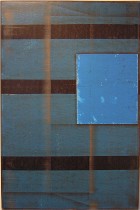
Before I embark on our First Friday Odyssey (we went to about 2,000 shows, it seemed) I want to get in a couple of shows I saw at Schmidt/Dean.
Michael Kessler’s acrylics on panel were a surprise, even though I had seen the card image. It just couldn’t capture what was going on, on the panels–the worn away layers of paint suggesting erosion and landscape and shape, the pencil gestures, the subtleties that transform these seemingly (at first blush) straight-edged floor plans or architectural spaces into something beautiful and interesting.
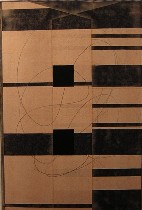
Kessler uses the weather to erode his paintings which have and a sort of view-from-the-airplane quality that gets more sensuous the closer you get. A winner of the Prix de Rome, Kessler has a piece at the Philadelphia Museum of Art. His work is worth a visit.
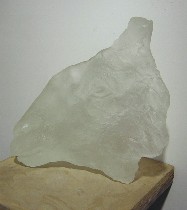
The other artist showing, Elisabeth Nickles, has switched from metal to glass following a residency at Seattle’s Pilchuck Glass School (see Roberta’s post).
She mounts her cast glass–mostly animal shapes, onto metal stands that have an architectural presence that make me think of Janus door posts. No surprise then that her influence is partly Roman glass, and some of the animals have a sacrificial references, such as libation cups.
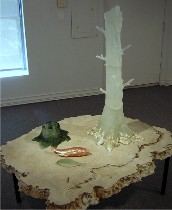
Glass’ translucence is always a pleasure, and the roughness in some of Nickles’ pieces rescues them from preciousness. I suspect Nickles is aware of the need to roughen the affect because of her choices of unpainted plywood or a concrete slab for some of her supports (left, “Tree Dream,” on a thick concrete slab with a wonderful, rough, scalloped edge).
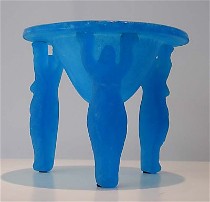
Probably because of the process, the material, and the ancient references, I am reminded of work by Philadelphia glass artist Lucartha Kohler, whose work seems a little more elemental (right, “Blue Bowl”).
I also caught the tail end of Larry Spaid’s work over at Snyderman. This body of work, according to his artist’s statement, was influenced by Asian fabric coloring techniques and symbolism.
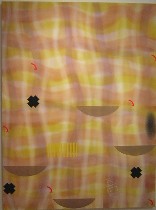 I enjoyed the fabric-y feel of so many of the pieces, and I enjoyed the way the symbols floated in space in front of the “fabric” backdrops. But some of my favorite pieces seemed to be more about the paint and the joys of mark-making, with energized fields of marks in front of a deep space.
I enjoyed the fabric-y feel of so many of the pieces, and I enjoyed the way the symbols floated in space in front of the “fabric” backdrops. But some of my favorite pieces seemed to be more about the paint and the joys of mark-making, with energized fields of marks in front of a deep space.









